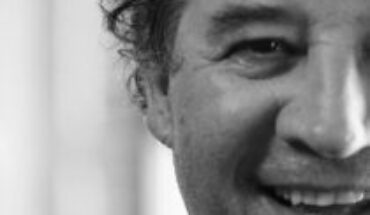President López Obrador said that Carlos Urzúa’s differences with Alfonso Romo and in the elaboration of the National Development Plan were the cause of Urzúa’s resignation from the Ministry of Finance. And it’s true. With Romo he had profound differences, especially in the appointments of those responsible for the development banking and the Tax Administration System. This is apparent from one of the paragraphs of Urzúa’s letter, that of the designation of characters “without knowledge of the political politics”. But in reality those differences that are real, are still personal and are somehow palatial disputes. Even in that sense, Herrera’s appointment, as we said yesterday, will help homogenize the team with a man, in addition, who has greater personality to take on those differences. But the president did not delve into another paragraph, “unsustainable public policies”, which is the main point of discord in the presidential team and cabinet: that of the Treasury, including the new secretary Arturo Herrera, with the Secretary of Energy, the CFE and Pemex , which is catalyzed with the next presentation of Pemex’s business plan. The difference is simple: energy policy weakens public finances, scares away investors, and thus violates stability. In the end you will have to choose between one and the other option, both are not supported. In this sense Herrera thinks the same as Urzúa, and even because of his relationship with financial markets he knows firsthand the deep concern that these policies generate in investors. If Pemex’s business plan is maintained on the terms in which it has been proposed (preliminary versions of it are already circulating) the rating of the oil company will fall and drag into the country’s, with very high costs for the economy and society. The commitment to stability passes through there. When presidents do not bet on the stability and professional management of the economy, they are often wrong. López Obrador is said to be an admirer of Antonio Ortiz Mena’s stabilizing development of the time, which lasted three six six, with a very successful economic policy, in which presidents did not get involved in economic management. It was Luis Echeverría who switched to the economic team of the stabilizing development to place Hugo B. Margáin in the Treasury, but he wanted to make a tax adjustment and then Echeverría, to make it clear who commanded, declared that “economic policy was carried in Los Pinos” and put his old friend, José López Portillo, in charge of the Hacienda. Already as president López Portillo removed the secretaries of Finance and Programming (economic management had been divided into those two secretariats) Carlos Tello and Rodolfo Moctezuma, who had profound differences between themselves and there began what Rolando Cordera called “the dispute for the nation,” between two major lines of economic development, and the crisis that exploded in 1982. His successor, Miguel de la Madrid already with a much more homogeneous team also had to choose between two men and two options: Carlos Salinas and Jesús Silva Herzog, opted for the first and made him president. During the government of Salinas de Gortari, the differences between Pedro Aspe and Ernesto Zedillo were notable, although the two disciplined the president and he handled the strategy from his office, accompanied mainly by Aspe. The assassination of Luis Donaldo Colosio prevented us from knowing the new economic policy with a more social cut that the candidate was flying. Donaldo’s death led Ernesto Zedillo to the presidency (Salinas would have preferred Aspe, even proposed to the PAN, but they failed to make the constitutional changes that would have allowed it). Zedillo placed Jaime Serra Puche, who had been a successful secretary of commerce, but had little relationship with financial markets, in the Treasury. Serra lasted 28 days at the head of the Treasury and was brought down by the December crisis. He was succeeded by Guillermo Ortiz, who put order in a crisis-deranged finance. Presidents Vicente Fox, Felipe Calderón and Enrique Peña had much more stability in their economic and financial designations, in part because they were not directly involved in economic management (although Calderón had more training about it) and what left to the specialists. At the end of the road, and very soon, that is the decision that President López Obrador must make: whether he manages, as now, the economy from his office in Palacio Nacional, or allows it to be managed in Palacio, but in the wing that occupies the Ministry of Finance.
Original source in Spanish
translated from Spanish: Who handles economic policy?
July 11, 2019 |





